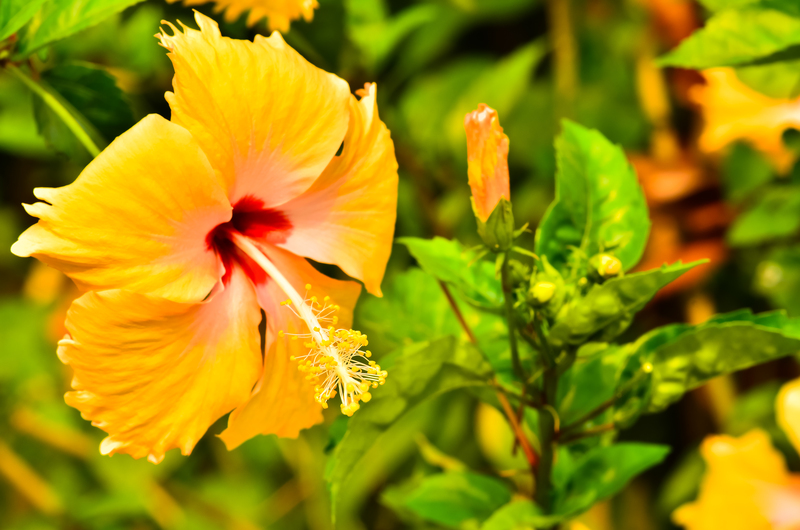Choosing the Best Gloves for Gardening
Posted on 31/08/2025
Choosing the Best Gloves for Gardening
Gardening can be a fulfilling and therapeutic activity, but it requires the right gear to protect your hands from thorns, dirt, and insects. One of the most essential pieces of gardening gear is a good pair of gloves. With so many options available, choosing the best gloves for gardening can be daunting. This comprehensive guide will help you find the perfect pair to suit your needs.
To select the best gloves, it's important to understand the different types and their intended uses.
1. **Cloth Gloves**: These are light, breathable, and ideal for light gardening tasks. They offer minimal protection but are comfortable for extended wear.
2. **Leather Gloves**: More durable than cloth gloves, leather gloves provide excellent protection against thorns and rough surfaces. They are suitable for heavy-duty tasks.
3. **Rubber-Coated Gloves**: These gloves feature a rubber coating on the palms and fingers, providing excellent grip and protection from moisture. They are perfect for tasks involving water or mud.
4. **Nitrile Gloves**: These are similar to rubber gloves but are more flexible and puncture-resistant. They provide good dexterity and are great for detailed tasks.
5. **Gauntlet Gloves**: With extended cuffs, gauntlet gloves protect your forearms as well as your hands, making them ideal for dealing with thorny or prickly plants.
When choosing gardening gloves, consider the following features to ensure maximum comfort and protection:
1. **Fit and Comfort**: Gloves should fit snugly without being too tight. Look for gloves with adjustable wrist straps to keep dirt out and provide a secure fit.
2. **Material**: Depending on your gardening tasks, choose gloves made from the appropriate material. Leather, nitrile, and rubber are durable options, while cloth gloves are lightweight and breathable.
3. **Durability**: Durable gloves are essential for heavy-duty gardening tasks. Look for reinforced fingertips and palms for added strength.
4. **Flexibility**: Choose gloves that offer good dexterity, especially for tasks that require precision, such as planting seeds or handling small plants.
5. **Breathability**: For extended wear, breathable gloves prevent your hands from sweating and provide comfort.
Based on the features discussed, here are some top recommendations for gardening gloves:
1. **Foxgloves Original Gardening Gloves**: Made from soft, moisture-wicking fabric, these gloves offer excellent comfort and dexterity for detailed tasks.
2. **Bionic ReliefGrip Gardening Gloves**: Designed with orthopedic tips to reduce hand fatigue, these gloves are great for individuals with arthritis or joint pain.
3. **Pine Tree Tools Bamboo Working Gloves**: Eco-friendly and breathable, these gloves provide a snug fit and good grip for various gardening tasks.
4. **Magid Glove & Safety BE195TL Gardening Gloves**: With anti-scratch gauntlet cuffs, these gloves protect your hands and forearms from thorns and branches.
5. **Ozero Leather Work Gloves**: Made from genuine cowhide leather, these gloves are highly durable and suitable for heavy-duty gardening tasks.
Understanding the pros and cons of each type of glove can help you make an informed decision.
1. **Cloth Gloves**
- Pros: Lightweight, breathable, inexpensive.
- Cons: Minimal protection, not suitable for heavy-duty tasks.
2. **Leather Gloves**
- Pros: Durable, excellent protection against thorns, ideal for heavy-duty tasks.
- Cons: Can be stiff, may require breaking in.
3. **Rubber-Coated Gloves**
- Pros: Good grip, waterproof, versatile.
- Cons: Less breathable, may cause sweating during extended wear.
4. **Nitrile Gloves**
- Pros: Flexible, puncture-resistant, good dexterity.
- Cons: Can be less durable than leather gloves.
5. **Gauntlet Gloves**
- Pros: Extended protection for forearms, ideal for thorny plants.
- Cons: Can be bulky, reduced dexterity.
1. **Try Before You Buy**: If possible, try on gloves before purchasing to ensure a good fit and comfort.
2. **Consider Multiple Pairs**: Different tasks may require different types of gloves. Having multiple pairs ensures you're prepared for any gardening activity.
3. **Check Reviews**: Reading customer reviews can provide insights into the durability and performance of gloves.
4. **Maintenance**: Consider gloves that are easy to clean and maintain, especially if you do a lot of dirty work in the garden.
Choosing the best gloves for gardening depends on your specific needs and the tasks you'll be performing. Consider the type of gloves, key features, and practical tips to make an informed decision. Whether you need lightweight gloves for detailed work or heavy-duty gloves for tough tasks, the right pair will make your gardening experience more enjoyable and effective.
In conclusion, the right gardening gloves are essential for protecting your hands and ensuring comfort while you tend to your garden. By understanding the different types of gloves and their features, you can choose the perfect pair that meets your needs. Remember to consider fit, material, durability, flexibility, and breathability when making your selection. With the right gloves, you can enjoy a safe and productive gardening experience.
Gardening can be a fulfilling and therapeutic activity, but it requires the right gear to protect your hands from thorns, dirt, and insects. One of the most essential pieces of gardening gear is a good pair of gloves. With so many options available, choosing the best gloves for gardening can be daunting. This comprehensive guide will help you find the perfect pair to suit your needs.
Understanding Different Types of Gardening Gloves
To select the best gloves, it's important to understand the different types and their intended uses.
1. **Cloth Gloves**: These are light, breathable, and ideal for light gardening tasks. They offer minimal protection but are comfortable for extended wear.
2. **Leather Gloves**: More durable than cloth gloves, leather gloves provide excellent protection against thorns and rough surfaces. They are suitable for heavy-duty tasks.
3. **Rubber-Coated Gloves**: These gloves feature a rubber coating on the palms and fingers, providing excellent grip and protection from moisture. They are perfect for tasks involving water or mud.
4. **Nitrile Gloves**: These are similar to rubber gloves but are more flexible and puncture-resistant. They provide good dexterity and are great for detailed tasks.
5. **Gauntlet Gloves**: With extended cuffs, gauntlet gloves protect your forearms as well as your hands, making them ideal for dealing with thorny or prickly plants.

Key Features to Look for in Gardening Gloves
When choosing gardening gloves, consider the following features to ensure maximum comfort and protection:
1. **Fit and Comfort**: Gloves should fit snugly without being too tight. Look for gloves with adjustable wrist straps to keep dirt out and provide a secure fit.
2. **Material**: Depending on your gardening tasks, choose gloves made from the appropriate material. Leather, nitrile, and rubber are durable options, while cloth gloves are lightweight and breathable.
3. **Durability**: Durable gloves are essential for heavy-duty gardening tasks. Look for reinforced fingertips and palms for added strength.
4. **Flexibility**: Choose gloves that offer good dexterity, especially for tasks that require precision, such as planting seeds or handling small plants.
5. **Breathability**: For extended wear, breathable gloves prevent your hands from sweating and provide comfort.
Top Gardening Gloves Recommendations
Based on the features discussed, here are some top recommendations for gardening gloves:
1. **Foxgloves Original Gardening Gloves**: Made from soft, moisture-wicking fabric, these gloves offer excellent comfort and dexterity for detailed tasks.
2. **Bionic ReliefGrip Gardening Gloves**: Designed with orthopedic tips to reduce hand fatigue, these gloves are great for individuals with arthritis or joint pain.
3. **Pine Tree Tools Bamboo Working Gloves**: Eco-friendly and breathable, these gloves provide a snug fit and good grip for various gardening tasks.
4. **Magid Glove & Safety BE195TL Gardening Gloves**: With anti-scratch gauntlet cuffs, these gloves protect your hands and forearms from thorns and branches.
5. **Ozero Leather Work Gloves**: Made from genuine cowhide leather, these gloves are highly durable and suitable for heavy-duty gardening tasks.
Pros and Cons of Different Gloves
Understanding the pros and cons of each type of glove can help you make an informed decision.
1. **Cloth Gloves**
- Pros: Lightweight, breathable, inexpensive.
- Cons: Minimal protection, not suitable for heavy-duty tasks.
2. **Leather Gloves**
- Pros: Durable, excellent protection against thorns, ideal for heavy-duty tasks.
- Cons: Can be stiff, may require breaking in.
3. **Rubber-Coated Gloves**
- Pros: Good grip, waterproof, versatile.
- Cons: Less breathable, may cause sweating during extended wear.
4. **Nitrile Gloves**
- Pros: Flexible, puncture-resistant, good dexterity.
- Cons: Can be less durable than leather gloves.
5. **Gauntlet Gloves**
- Pros: Extended protection for forearms, ideal for thorny plants.
- Cons: Can be bulky, reduced dexterity.
Practical Tips for Choosing Gardening Gloves
1. **Try Before You Buy**: If possible, try on gloves before purchasing to ensure a good fit and comfort.
2. **Consider Multiple Pairs**: Different tasks may require different types of gloves. Having multiple pairs ensures you're prepared for any gardening activity.
3. **Check Reviews**: Reading customer reviews can provide insights into the durability and performance of gloves.
4. **Maintenance**: Consider gloves that are easy to clean and maintain, especially if you do a lot of dirty work in the garden.

Takeaways
Choosing the best gloves for gardening depends on your specific needs and the tasks you'll be performing. Consider the type of gloves, key features, and practical tips to make an informed decision. Whether you need lightweight gloves for detailed work or heavy-duty gloves for tough tasks, the right pair will make your gardening experience more enjoyable and effective.
Conclusion
In conclusion, the right gardening gloves are essential for protecting your hands and ensuring comfort while you tend to your garden. By understanding the different types of gloves and their features, you can choose the perfect pair that meets your needs. Remember to consider fit, material, durability, flexibility, and breathability when making your selection. With the right gloves, you can enjoy a safe and productive gardening experience.



